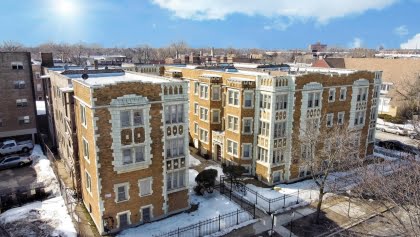03.01.21
Nine Ways Real Estate Decision Makers Can Address Affordability And Gentrification

Both housing affordability and gentrification seem to be hot-button topics in real estate these days. With the costs of real estate rising in many areas, affordable housing is becoming more of an uphill battle. Gentrification leads to the other extreme, where wealthier residents displace inner-city individuals, driving them out because of rising rent and property costs.
Neither of these reflects well on the real estate industry as a whole, and decision makers must take steps to help address these issues. Nine experts from Forbes Real Estate Council weigh in how real estate leaders can approach both of these matters and how the actions they take can make a difference to the industry and the individuals impacted directly.
1. Build Relationships With Local Stakeholders
Meeting the needs of underserved communities is both a challenge and an opportunity. Relationships with local stakeholders are important. Certain markets, while appealing, may not make economic sense. Land costs may be too high, carrying costs and time while undertaking permits and approvals may be too costly or municipality governance may not be favorable for development. Collaboration is vital. – Anne Keshen, RMT Capital Management
2. Promote Equal Housing Opportunity
It is essential that business leaders constantly remind and properly train their workers. Enforce policies that make sure all Americans have equal access to the housing of their choice regardless of their race, color, religion, sex, national origin, disability, familial status and sexual orientation. – Rodolfo Delgado, Replay Listings
3. Incentivize Owners To Keep Rents Lower
Affordable housing is best solved through public and private programs/partnerships. The least expensive method for creating affordable housing is to incentivize owners of naturally occurring affordable housing (NOAH) properties to keep rents indexed to a percentage of area median income by in turn offering property tax breaks or other discounts. – Lee Kiser, Kiser Group
4. Help Home Builders Make A Profit
One of the greatest impediments to affordable housing is the fact that homebuilders can’t make money on starter homes. The housing ladder is broken but it could be fixed if we find ways to make it profitable for home builders to build entry-level housing instead of luxury housing. Start locally as housing impact fees and overreaching regulations need to be reduced or removed. More affordable inventory is a must. – Kevin Hawkins, WAV Group, Inc.
5. Hire And Purchase Locally
Working hand-in-hand with local communities is critical. That means hiring local, purchasing local and consuming local with a long-term vision that benefits and includes everyone. – Remy Raisner, The Raisner Group
6. Promote Business-Friendly Regulations
Promote and support business-friendly regulations to incentivize developers to build more affordable and middle market housing. The cost of construction has gone up significantly but tax incentives and less red tape to navigate through can help offset some of the increases in labor and material costs. In many markets, the numbers won’t pencil out for an affordable housing project without these efforts. – Catherine Kuo, Elite Homes | Christie’s International Real Estate
7. Lobby For Creative Solutions
Displacement of long-time and low-income residents is the biggest consequence of decreasing housing affordability and gentrification. Lobbying for creative solutions such as Community Land Trusts (CLTs), Tenant Option to Purchase and Vacancy Tax can help alleviate this problem. Supporting groups and political parties that advocate for this cause is the best way for an individual to help. – Ron Costa, The Eighty Two Group
8. Help Developers Get Loans
Affordability is driven by market demands and the anticipated asset-based inflation will only increase prices. If you really want to make a change, make it easier for developers who do not have LiHTC experience to get loans to build affordable housing, reduce the cumbersome paperwork and streamline those processes. Also, new building technologies will be required to reduce development costs. – Amy Tiemann, TM1 Properties
9. Find Alternative Financing Solutions
Gentrification is inevitable, so it will create an even more urgent need for affordable housing. To address the issue, we need to keep looking for alternative financing solutions to ensure that the majority can afford a home in gentrified neighborhoods. It is our duty as leaders in the real estate industry to work with financing institutions as well as the government to look for these alternatives. – Taylor Valore, Mashvisor
